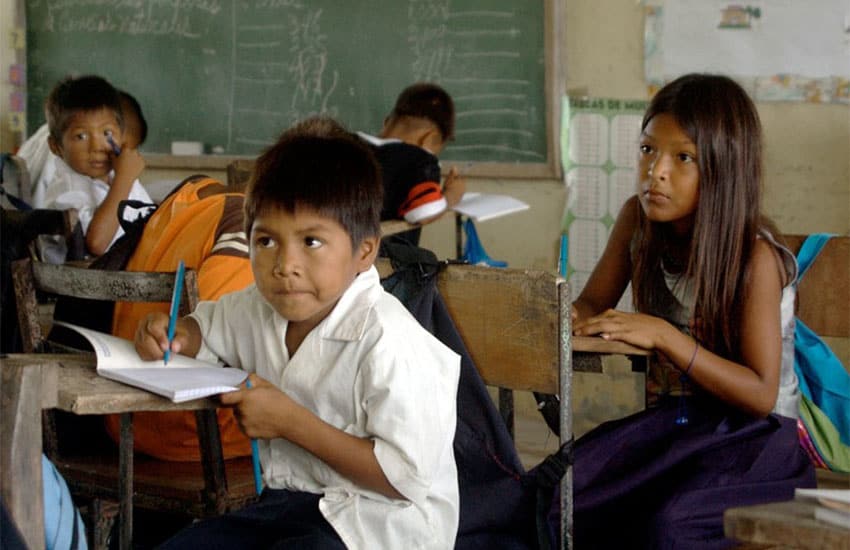An academic study of 15-year-olds in 81 nations around the world ranks Mexico 51st overall for its combined scores in math, reading and science.
The conclusion is that Mexican students are falling behind their global counterparts in those subjects, according to the report released Monday by the Organization for Economic Cooperation and Development (OECD).

The Program for International Student Assessment (PISA) tested approximately 700,000 students from OECD member countries and partner economies throughout 2022.
Approximately one-third of Mexican students ranked at Level 1 or 2, the lowest level, while only seven out of every 1,000 Mexican students scored in the highest ranks (Levels 5 and 6).
In math, for example, only 34% of Mexico’s students achieved basic proficiency or better (Level 2 or higher), significantly less than the OECD average of 69%.
The report noted that while some falling results can be attributed to the COVID-19 pandemic, it is inaccurate to blame prolonged school closures and social isolation as the sole causes of the drop in scores.

The country achieved 395 points in mathematics, 14 points below its 2018 score and 77 points below the 2022 OECD average of 472.
In reading, Mexico scored 415, only five points lower than 2018 and 61 points below the OECD average; and in science, Mexico scored 410, nine points lower than 2018 and 75 points below the OECD average.
Mexico isn’t the only nation with waning numbers. The report shows a general decline in the results overall. “From PISA 2018 to PISA 2022, the evaluation fell 15 points in mathematics, 10 points in reading and two in science,” the report noted.
“PISA provides the evidence and public policy findings that countries need to address these issues,” noted Andreas Schleicher, director for education and skills and an adviser on education policy at the Paris-based OECD. “There is an urgent need to take action. The task for governments is to help education systems rise to this challenge.”

Mexican students achieved PISA gains between 2003 and 2009, but the new data shows a backslide over the past 10 years.
In math, Mexico’s number of low-performing students was 11 percentage points higher in 2022 than it was in 2012. In reading it was 5 percentage points higher and in science it didn’t change significantly.
The study also showed that 25% of students in Mexico reported feeling alone at school and 26% felt marginalized or excluded, higher than the OECD averages.
Additionally, 69% of students in Mexico reported that they made friends easily at school, close to the OECD average of 76%. Also, about 9% of students in Mexico reported that they had repeated at least one grade, which is the same as the OECD average.
One overall trend in Mexico is that the top 25% of students in terms of socioeconomic advantages outperformed disadvantaged students (the bottom 25%) by significant margins, with a 58 point spread in mathematics.
However, some economically disadvantaged students have thrived, with 12% of them finishing in the top 25% in math.
The countries that stood out in the results were Singapore, Japan, South Korea and Estonia, all surpassing 500 points in each of the three subjects. Canada was No. 5 while the United States raised some alarm bells with a No. 31 ranking.
With reports from Expansión Política
